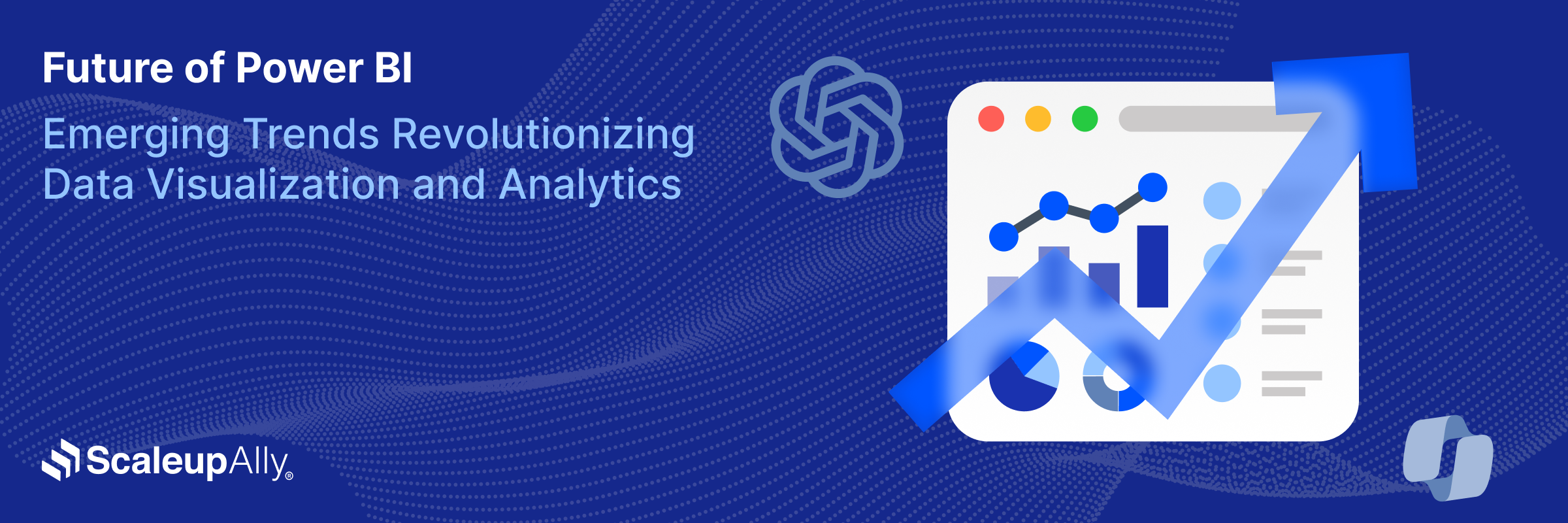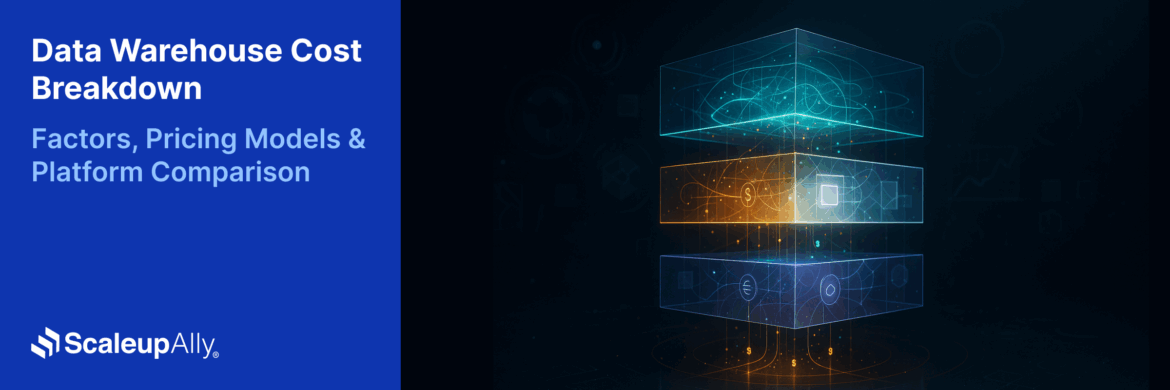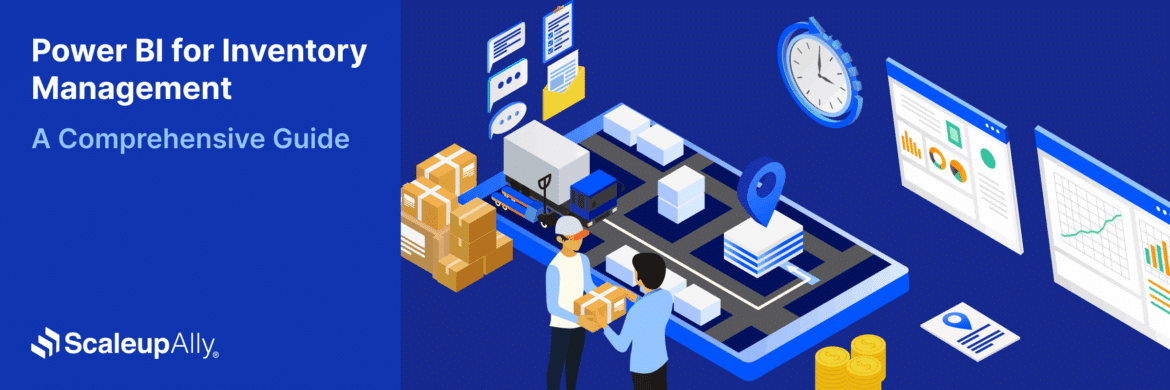
Future of Power BI: Emerging Trends Revolutionizing Data Visualization and Analytics
Tarsem Singh | August 29, 2025 , 7 min read
Table Of Content
The future of Power BI is unfolding rapidly. The platform is evolving from a reporting tool into an intelligent analytics platform. It automates complex tasks and leverages natural language queries to remove technical barriers.
With the future outlook of Power BI, data visualization will never look the same. This blog discusses Power BI trends in 2025 to follow.
Key Takeaways
- Power BI’s Copilot feature allows non-technical use to ask questions in natural language (plain English) and get visual answers.
- Power BI eliminates technical barriers so teams can generate reports without the help of IT staff, generating twice the business value.
- Power BI works on mobile, so teams can have access to dashboards and push notification alerts to make critical decisions anywhere, anytime.
- Advanced governance protects sensitive data while still enabling fast, independent data exploration across the organization
What Does the Future Hold for Power BI?
What is the future of Power BI you ask. The future looks remarkably bright for Power BI. The platform controls over 30% of the market share in the analytics and BI platforms segment. Placing it firmly ahead of competitors like Tableau and SAP. Power BI’s dominance is further evidenced by the fact that 97% of Fortune 500 companies use Power BI, with over 100,000 organizational users and 30 million-plus active monthly users.
But market dominance means nothing without innovation. The May 2025 Power BI update introduces a standalone Copilot feature that allows users to “Ask Anything!” Users can now type simple questions like “How much did we sell last month?” and get instant visual answers.
This innovation positions Power BI to capitalize on significant market growth. The global business intelligence market is set to grow considerably from USD 29.42 billion dollars to USD 54.27 billion by 2030, representing a CAGR of 9.1%.
More specifically for Power BI consulting services, it is projected to reach around $4.8 billion by 2032.
Business intelligence tools in 2025 need to work anywhere, and Power BI has implemented that with enhanced mobile capabilities and real-time data streaming. The platform now processes data as it flows, to enable companies spot trends, anomalies, and opportunities the moment they emerge.
Microsoft Fabric and OneLake also integrate fully with Power BI. This makes it simple for teams to tap into data in shared sources without creating double copies.
If the needs mentioned here are constantly addressed (convergence of AI, real-time analytics, and natural language processing creates opportunities.), Power BI has the potential to remain the leading BI tool in the years to come.
Top 10 Trends in Power BI to Follow in 2025
Here are ten Power BI future trends to drive data-driven decisions in 2025.
1. AI-Powered Copilot Integration
Power BI’s Copilot feature enables users to type simple questions, like ‘How much did we sell last month?’ and get instant answers from the data. This eliminates the need to be technical. The elimination of this barrier has made advanced analytics accessible to everyone. Copilot can generate entire reports, create DAX formulas, and provide contextual recommendations based on your business needs.
2. Real-Time Analytics and Streaming Data
Power BI now supports real-time updates from IOT devices, factory machines, apps, and websites. The support is to allow organizations to monitor performance metrics, track customer behavior, and detect anomalies as they happen. Businesses can then immediately respond to market changes rather than reactive decision-making based on historical data. This accessibility gives businesses a competitive edge.
3. Mobile-First Business Intelligence
Remote work demands anywhere-access to insights. The mobile BI market reflects this urgency. It is expected to reach USD 19.93 billion in 2025 and grow at a CAGR of 22.76% to reach USD 55.56 billion by 2030. Teams can now make critical decisions from anywhere. This transforms how businesses operate in a distributed world.
4. Natural Language Processing Revolution
NLP-based tools are expected to be adopted by 42% of businesses. Users can now ask “Show me Q1 sales trends by region” in plain English and receive immediate visual responses. Technical barriers are disappearing for this reason. This makes data accessible to all and allows non-technical stakeholders to explore insights independently without depending on IT staff for help.
5. Microsoft Fabric Ecosystem Integration
Microsoft Fabric and OneLake also integrate fully with Power BI. Teams can use shared data without making extra copies. This unified setup simplifies data management, cuts redundancy, and speeds up report creation. It also ensures consistent data governance and quicker access to insights across departments.
6. Predictive Analytics and Machine Learning
Businesses are moving from reactive to proactive strategies. AI and machine learning help predict sales and suggest the next best steps. With Power BI’s built-in ML tools, teams can automate forecasting, detect anomalies, and analyze trends to anticipate market shifts, address risks early, and improve operations before issues arise.
7. Enhanced Security and Governance
Power BI uses Microsoft Purview to provide role-based access, audit trails, and compliance tools to keep data secure. This lets organizations protect sensitive information while still allowing teams to explore and analyze data. Features like advanced encryption, row-level security, and detailed monitoring help meet changing regulatory requirements.
8. Self-Service Analytics Expansion
More and more companies will aim to make data accessible to every employee. The drag-and-drop functionality and guided analytics in Power BI empower business users for this possibility. This would reduce IT bottlenecks while enabling faster decision-making across all organizational levels.
9. Advanced Visualization Capabilities
Modern Power BI has dynamic storytelling tools, 3D visuals, and interactive dashboards. BI is shifting from showing “what happened” to explaining “what it means.” It also guides “what to do next.” Better formatting, conditional styling, and smart narratives turn raw data into clear stories. These stories drive action.
10. Edge Computing and IoT Integration
5G and edge computing are speeding up mobile BI adoption. Latency drops to sub-millisecond levels. This allows real-time analytics in manufacturing, retail, and financial trading. Power BI can connect to edge devices and process data locally. That reduces bandwidth use and improves response times. It’s especially useful for industries that need instant decisions from sensor data and operational metrics.
Conclusion
The future of Power BI is here, and it’s transformative. Organizations embracing these 10 trends will gain competitive advantages through faster, smarter data-driven strategies.
Contact us today to discover how these emerging trends can revolutionize your analytics journey.
Frequently Asked Questions
Q: Will Power BI remain relevant in the future?
With 97% of Fortune 500 companies using Power BI and over 30% market share, Power BI will continue to stay ahead of competitors and remain relevant in the future.
Q: How will AI change Power BI?
AI will enable natural language queries, automated insights, and predictive analytics so that users can ask questions in plain English, get instant visual answers, and receive proactive recommendations without technical expertise.
Q: What industries will benefit most from future Power BI features?
Manufacturing, healthcare, finance, and retail will see major gains. Healthcare will benefit from predictive patient insights and financial services leverage instant fraud detection.
Related Blogs

Data Warehouse Cost Breakdown: Factors, Pricing Models & Platform Comparison
Discover how much a data warehouse costs in 2025. Explore pricing models, key factors, and platform comparisons to plan your data budget effectively.
Tarsem Singh
Nov 6 ,
14 min read

How Much Do Integrations Cost? [Pricing Breakdown & Key Insights]
Learn how much integrations cost, key factors influencing pricing, hidden expenses to avoid, and effective ways to reduce integration costs.
Tarsem Singh
Nov 6 ,
9 min read

Power BI for Inventory Management: A Comprehensive Guide
Explore the hidden power of Power BI for inventory management and how it provides businesses with powerful analytics and visualization capabilities.
Tarsem Singh
Oct 8 ,
19 min read


